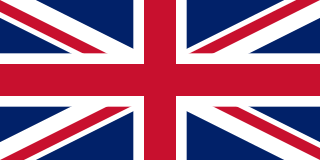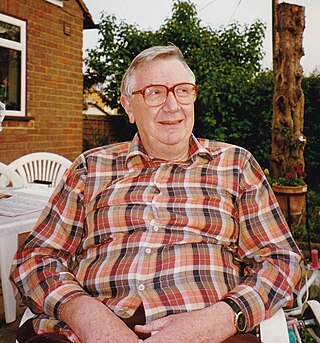
The Six Nations Championship is an annual international men's rugby union competition between the teams of England, France, Ireland, Italy, Scotland and Wales. The current champions are Ireland, who won the 2023 tournament.
The British Home Championship was an annual football competition contested between the United Kingdom's four national teams: England, Scotland, Wales, and Ireland. Beginning during the 1883–84 season, it is the oldest international association football tournament in the world and it was contested until the 1983–84 season, when it was abolished after 100 years.

The United Rugby Championship (URC) is an annual rugby union competition involving professional teams from Ireland, Italy, Scotland, South Africa, and Wales. For sponsorship reasons the league is known as the Vodacom United Rugby Championship in South Africa, and the BKT United Rugby Championship in the competition's other territories, the split branding mirroring the format previously adopted in Super Rugby. The Championship represents the highest level of domestic club or franchise rugby in each of its constituent countries.
Association football is organised on a separate basis in each of the four constituent countries that make up the United Kingdom (UK), with each having a national football association responsible for the overall management of football within their respective country. There is no United Kingdom national football team. Football has been the most popular sport in the UK since the 1860s. Rugby union, rugby league and cricket are other popular sports.

Sport in the United Kingdom plays an important role in British culture and the United Kingdom has played a significant role in the organisation and spread of sporting culture globally. In the infancy of many organised sports, the Home Nations were heavily involved in setting out the formal rules of many sports and formed among the earliest separate governing bodies, national teams and domestic league competitions. After 1922, some sports formed separate bodies for Northern Ireland, though many continued to be organised on an all-Ireland basis. For this reason, in many though not all sports, most domestic and international sport is carried on a Home Nations basis, and England, Wales, Scotland and Ireland are recognised as national entities.
In rugby union, a Grand Slam occurs when one team in the Six Nations Championship beats all the others during one year's competition. This has been achieved 42 times in total, for the first time by Wales in 1908, and most recently by the Irish team in 2023. The team with the most Grand Slams is England with 13. It can also apply to the U20 and Women's Six Nations Championships.

Rugby union in England is one of the leading professional and recreational team sports. In 1871 the Rugby Football Union, the governing body for rugby union in England, was formed by 21 rugby clubs, and the first international match, which involved England, was played in Scotland. The England national team compete annually in the Six Nations Championship, and are former world champions after winning the 2003 Rugby World Cup. The top domestic men's club competition is Premiership Rugby, and English clubs also compete in international competitions such as the European Rugby Champions Cup. The top domestic women's competition is the Premier 15s.

The English Bridge Union or EBU is a player-funded organisation that promotes and organises the card game of duplicate bridge in England. It is based at offices in Aylesbury. The EBU is a member of the European Bridge League and thus affiliated with the World Bridge Federation, which promulgates the laws of the game.

The 2007 Six Nations Championship was the eighth series of the rugby union Six Nations Championship. Including the previous incarnations as the Home Nations and Five Nations, this was the 113th series of the international championship. Fifteen matches were played over five weekends from 3 February to 17 March.

The Women's Six Nations Championship, known as the Guinness Women's Six Nations for sponsorship purposes, is an international rugby union competition contested between six European women's national teams. It started in the 1995–96 season as the Home Nations, with four teams: England, Ireland, Scotland and Wales.

Raymond Slater Brock was a leading English bridge player and then a long-time administrator. He was a member of the Great Britain team that finished second in both the 1987 European Bridge League championship and the 1987 Bermuda Bowl world championship, and fifth in the 1988 World Team Olympiad. This success came during his partnership with Tony Forrester, which lasted from 1982 to 1990. He achieved the rank of World International Master through his performances.

The 2009 Six Nations Championship, known as the RBS 6 Nations for sponsorship reasons, was the 10th Six Nations Championship, and the 115th international championship, an annual rugby union competition contested by the six major European national teams: England, France, Ireland, Italy, Scotland and Wales. The tournament was held between 7 February and 21 March 2009.

The British and Irish Cup was an annual rugby union competition for second tier, semi-professional clubs and the reserves or developing teams from professional clubs from Great Britain and Ireland. It took place for the first time in the 2009–10 season, and ran for 9 seasons.
The 2009–10 British and Irish Cup was the first season of the annual rugby union competition for second tier, semi-professional clubs from Britain and Ireland. First round matches began on Friday 20 November 2009 and the final was held on Sunday 16 May 2010.
The 2013 Six Nations Championship, known as the 2013 RBS 6 Nations because of the tournament's sponsorship by the Royal Bank of Scotland, was the 14th series of the Six Nations Championship, the annual northern hemisphere rugby union championship. It was contested by England, France, Ireland, Italy, Scotland and Wales.
The British Bridge League (BBL) was founded in 1931 by A. E. Manning Foster. It formerly selected bridge teams to represent Great Britain in European and World competitions and organised the Camrose Trophy, the Gold Cup, the Portland Cup and the Lady Milne Trophy.
Bridge Great Britain is an organisation which was formed to continue the organisational functions of the British Bridge League from 1 January 2000 when that body was dissolved at the end of 1999. It organises the Gold Cup and several annual international bridge competitions between teams representing England, Northern Ireland, the Republic of Ireland, Scotland, and Wales; including the Camrose Trophy and like events.
The 2016 Six Nations Championship, known as the 2016 RBS 6 Nations due to the tournament's sponsorship by The Royal Bank of Scotland, was the 17th series of the Six Nations Championship, the annual northern hemisphere rugby union championship.

Patrick David Jourdain was a British bridge player, teacher and journalist. Over six decades he played in more than seventy international matches for Wales, more than any other player. He was bridge correspondent of the Daily Telegraph from 1992 until his death. His World Bridge Federation obituary described him as "the bridge-journalist’s journalist". According to the English Bridge Union's death notice: "Ever the dedicated journalist, he penned his own obituary to ensure that the media would have their copy in timely fashion."











